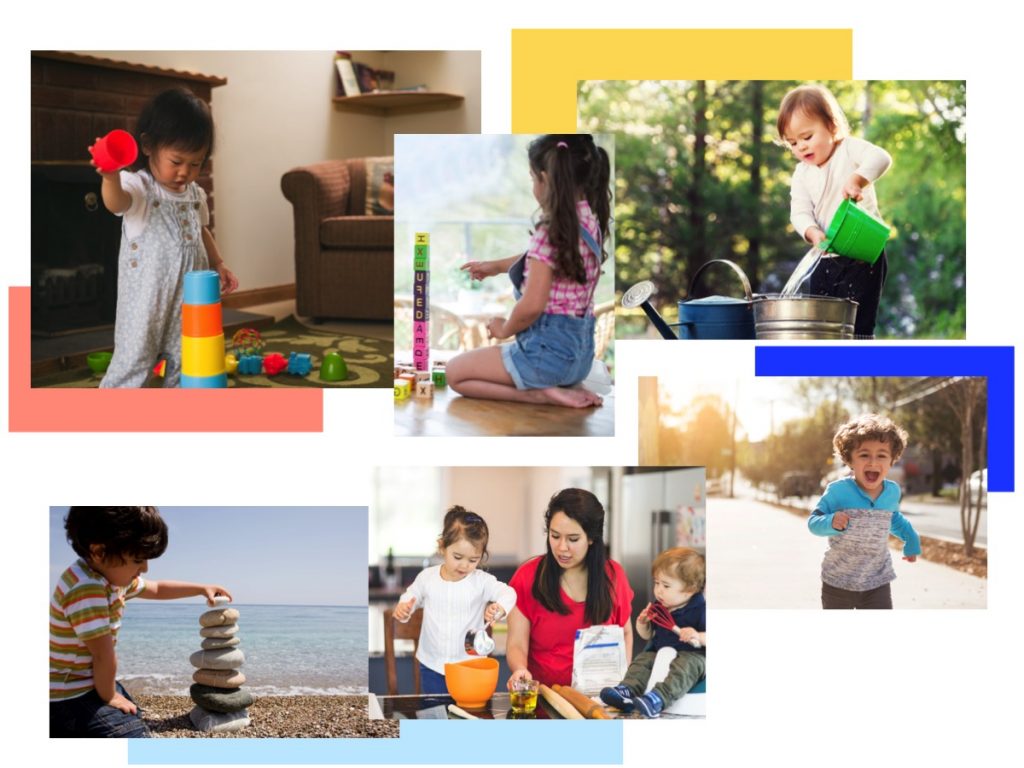
We use numeracy throughout our lives in everything from our jobs to hobbies. Numeracy provides the foundation for learning other math concepts. In the last section, we’ll discuss two of these concepts: measurement and patterns. Early numeracy skills allow us to apply and comprehend measurement. And numeracy and patterns help us learn mathematical operations and understand mathematical relationships.
Learning about measurement is an important lifelong skill. We use it in everything, from cooking to driving, to selecting the right size clothes. Measurement includes size, length, height, weight, volume, distance, and time. And, we can measure different attributes of the same object. Take a bowl, for instance. We can measure its height, weight, capacity, or circumference. And, the bowl may be “big” in circumference but “little” in height.
Measurement is a natural part of children’s play, long before they learn to use measurement tools like a ruler. Infants fill and empty containers. Toddlers add and remove stacking cups. Preschoolers build tall towers or talk about how fast or far they can run.
Adults can enhance children’s understanding of measurement with the language they use. Use words such as heavy, far, tall, and how long. “The slide is near but the swings are far.” Teachers don’t need to create planned lessons on concepts like “big” verses “little.” Instead, incorporate math conversation and practice math concepts during everyday play. “You stacked the little rock on top of the big rock. Now you have two rocks in your stack.” Children will also pick up math concepts from watching you!
-
- Cardinality
- is the concept that, when counting objects, the last number represents the total number of objects in the set
- Measurement
- includes size, length, height, weight, volume, distance, and time
- Number and operations
- refers to a set of math concepts related to understanding and representing numbers and operations (e.g., addition, subtraction, multiplication, and division) and the relationships between them
- Numeracy
- is the ability to understand and reason with numbers
- One-to-one correspondence
- refers to matching one object to each number word when counting
- Subitizing
- refers to the ability to identify the number of objects in a small group of objects without counting them
- Scaffolding
- is offering the right level of support to help a child achieve more than they would be able to on their own